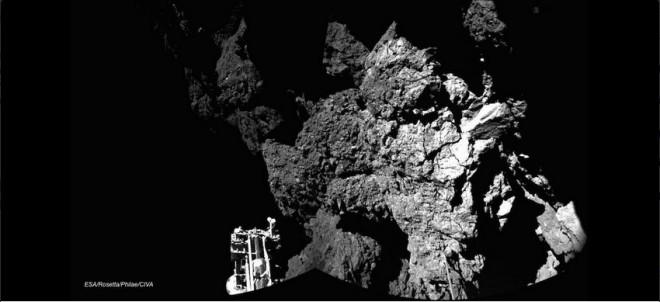
The first ever landing of a robot on a comet has brought out startling details that could help understand the origins of life.
The European Space Agency's Philae Lander has reportedly found organic molecules on the surface of Comet 67P/Churyumov-Gerasimenko before it ran out of power.
The Philae Lander, which was part of ESA's Rosetta Space Mission, touched down on the comet, 500 million kilometres from Earth, last week creating history. However, after an initial bumpy landing, the comet exhausted it batteries in three days, but not before beaming back crucial data to earth.
Apart from sending back photos of the comet's surface, one of the lander's instruments called 'Cosac' sniffed carbon and hydrogen-containing molecules on the surface, known as the building blocks of life.
"Cosac was able to 'sniff' the atmosphere and detect the first organic molecules after landing. Analysis of the spectra and the identification of the molecules are continuing," the Rosetta probe's operating agency German Aerospace Centre (DLR) said in a statement, The Guardian reported.
"(This) will help us to understand whether organic molecules were brought by comets to the early earth," Stephan Ulamec, the Philae's landing manager reportedly said.
It is widely believed that life on Earth began after a comet containing organic molecules collided with it.
The discovery is being described as "fascinating" and "tremendous".
"There has long been indirect evidence of organic molecules on comets as carbon, hydrogen and oxygen atoms have been found in comet dust," Professor John Zarnecki, space scientist at the Open University and deputy principal investigator on one of Philae's instruments was quoted saying.
"It has not been possible to see if these are forming complex compounds before and if this is what has been found then it is a tremendous discovery."
The Philae lander, said to be the size of a washing machine, had landed on the comet on 12 November in a culmination of 10 years of the mission's journey in space. It took seven hours to land on the comet, and the lander spent 60 hours drilling and beaming back photos before it went into hibernation.

















